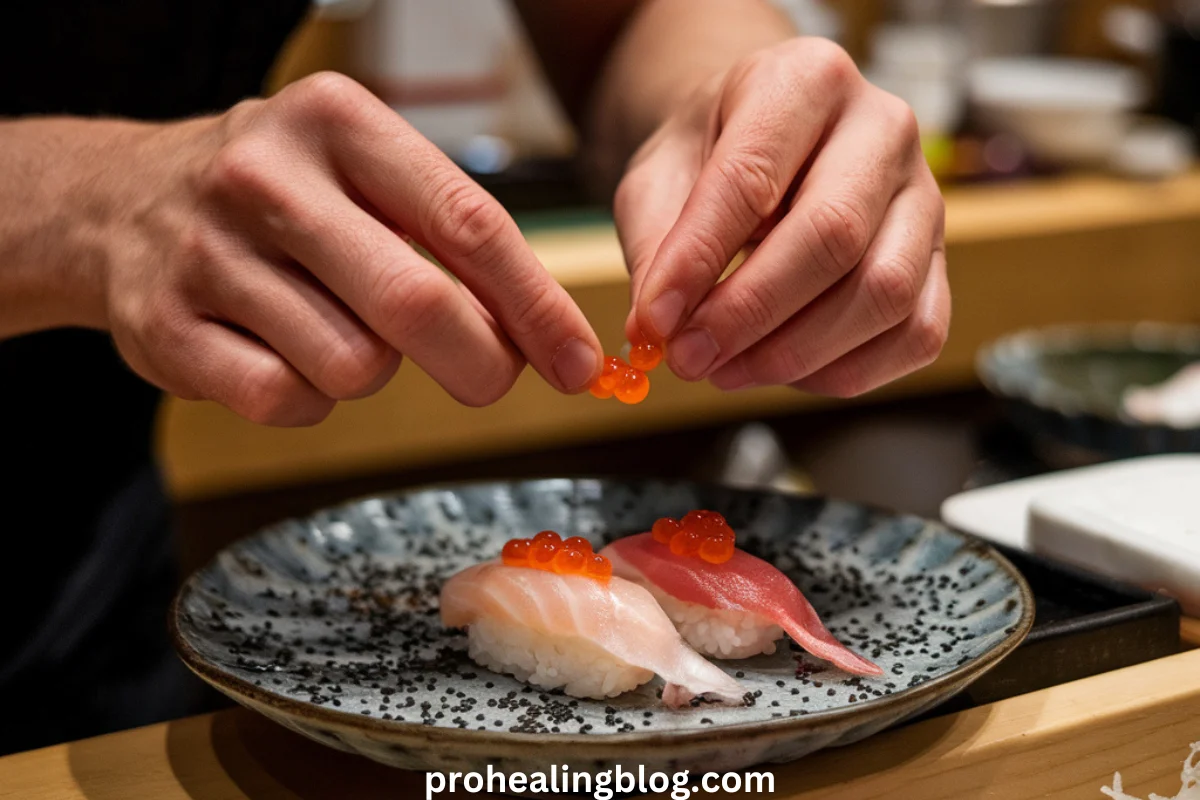Have you ever tasted something so small yet so bursting with flavor that it left you wanting more? Enter masago—the tiny, vibrant orange fish roe that’s a staple in sushi rolls and Japanese cuisine. But masago is more than just a garnish; it’s a powerhouse of flavor, texture, and nutrition.
Did you know that masago comes from the capelin fish, a species found in the cold waters of the North Atlantic and Arctic Oceans? Despite its small size, it has made a big splash in the culinary world, gracing everything from sushi to salads. But what exactly is masago, and why should you care?
In this article, we’ll explore everything you need to know about masago—from its origins and health benefits to creative ways to use it in your cooking. Let’s dive in!
See Also: Warning Signs of Mold Toxicity: Protect Your Health Today
What is Masago?
Masago is the roe (eggs) of the capelin fish, a small forage fish similar to smelt. These tiny eggs are known for their bright orange color, crunchy texture, and mild, slightly salty flavor. Unlike other types of fish roe, such as tobiko (flying fish roe) or ikura (salmon roe), masago is smaller and less expensive, making it a popular choice for chefs and home cooks alike.
The Origins of Masago
Masago comes from the capelin fish, which is primarily found in the cold waters of the North Atlantic and Arctic Oceans. Capelin are a crucial part of the marine ecosystem, serving as a food source for larger fish, seabirds, and marine mammals.
The roe is harvested during the capelin spawning season, which typically occurs in late spring or early summer. After harvesting, the eggs are cleaned, salted, and sometimes dyed to enhance their vibrant color.
Health Benefits of Masago
Don’t let its small size fool you— roe (eggs) of the capelin fish are packed with nutrients. Here are some of its key health benefits:
1. Rich in Omega-3 Fatty Acids
- Supports heart health and reduces inflammation.
2. High in Protein
- Helps build and repair tissues, making it a great addition to a balanced diet.
3. Low in Calories
- A guilt-free way to add flavor and texture to your meals.
4. Source of Vitamins and Minerals
- Contains vitamin B12, selenium, and magnesium, which support energy production and immune function.
Culinary Uses of Masago
Masago’s versatility makes it a favorite among chefs and food enthusiasts. Here are some popular ways to use it:
1. Sushi and Sashimi
- It is commonly used as a topping for sushi rolls, sashimi, and nigiri. Its crunchy texture and mild flavor complement the delicate taste of raw fish.
2. Garnishes
- Sprinkle it on salads, soups, or deviled eggs for a pop of color and flavor.
3. Pasta and Rice Dishes
- Add it to pasta or rice dishes for a unique twist. It pairs well with creamy sauces and citrus flavors.
4. Appetizers
- Use it as a filling for canapés or as a topping for crackers and blinis.
See Also: PODN : Health and Tech Impacts Explored
How to Store Masago
To keep it fresh and flavorful, follow these storage tips:
- Refrigerate: Store it in an airtight container in the refrigerator.
- Use Quickly: Consume within 2-3 days of opening for the best quality.
- Freeze: For longer storage, freeze it in a sealed bag or container. Thaw in the refrigerator before use.
Masago vs. Tobiko: What’s the Difference?
While roe (eggs) of the capelin fish and tobiko are often used interchangeably, they have some key differences:
- Size: Tobiko is slightly larger and has a more pronounced crunch.
- Flavor: Tobiko has a sweeter, smokier flavor compared to masago’s mild taste.
- Color: Tobiko is naturally brighter and often comes in a variety of colors, while masago is typically dyed orange.
Is Masago Sustainable?
The seafood industry increasingly prioritizes sustainability, as overfishing and climate change threaten capelin populations despite their current stability.To ensure you’re making an eco-friendly choice, look for it from fisheries that follow sustainable practices.
Creative Recipes Using Masago
Ready to get cooking? Here are two simple recipes to try:
1. Masago Sushi Rolls
- Ingredients: Sushi rice, nori, fresh fish (e.g., salmon or tuna), cucumber, avocado, and masago.
- Instructions: Spread sushi rice on nori, add fillings, roll tightly, and top with masago. Slice and serve.
2. Masago Pasta
- Ingredients: Spaghetti, cream sauce, lemon zest, masago, parsley.
- Instructions: Cook pasta, toss with cream sauce, and top with masago, lemon zest, and parsley.
Final Thoughts
The roe (eggs) of the capelin fish may be small, but it’s a culinary gem that undoubtedly deserves a spot in your kitchen. Whether you’re a sushi lover or simply looking to experiment with new flavors, this tiny roe offers endless possibilities. Moreover, its versatility makes it a standout ingredient, while its unique texture and flavor can elevate even the simplest dishes. Therefore, don’t underestimate its potential—it might just become your new favorite addition to meals!
So, the next time you see it on a menu or at the grocery store, don’t hesitate to give it a try. Your taste buds—and your health—will thank you. If you found this guide helpful, share it with fellow foodies and let’s spread the love for masago!
See Also: ZzzQuil Ingredients: Health Insights






